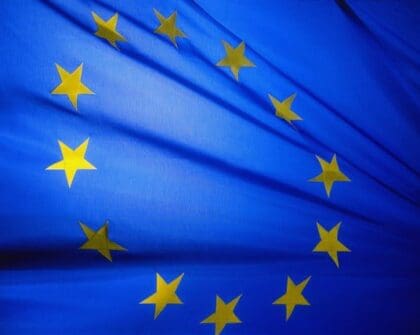
However, grey areas begin to emerge when it is considered that the EU is a global leader in the production of renewable energies, which make up 44% of the union’s entire power capacity – 15% of this being the total amount of energy consumed overall. In fact, 70% of the EU’s energy output was as a result of renewable sources, based on the 7 years from 2004 to 2011.
Even though the EU’s energy figures are impressive, changing political opinions have as a result changed resounding opinions regarding the renewable energy market. As political uncertainty hangs over the political mood as a result of Brexit, how will this impact upon the future success of the EU’s renewable energy targets?
When it came to investing within renewable energy options, the UK was fourth in the world (excluding hydroelectricity), with an investment growth of 25% since 2014. However, the Department of Energy and Climate Change decided to withdraw funding and shift it towards nuclear power at Hinkley point, leaving a black hole where investment once existed. This also appears to be the case in Germany, as investments in renewables have been slashed by 46%, which casts significant doubt over the sector’s future.
When these financial hiccups are placed to one side, what remains evident is that the EU has still managed to lead the way when it comes to renewable energies, remaining the largest producer of these fuels in the world. One question arises as a result of this evaluation, how long will this success last within the sector when political relations between the UK and the EU are currently frayed?
The EU’s current targets
Equivalent to an increase of 5.6% per year, between 2004 and 2014, the EU increased the total production of renewables by 73.1%, which results in the EU being a global leader in the industry. Out of the 29, each member state has their own targets to adhere to, with each member having to contribute a certain percentage of their overall energy production towards renewables.
By 2020, 15% of the UK’s total energy should come from renewable sources. However, this figure is currently lagging by 5%. Due to increased direct investment from the UK into this sector quadrupling, this may change, and this has only been matched by Belgium, Luxembourg, and Malta.
Based on current figures, the EU is not likely to reach its overall forecasted targets for 2020.
There has been a lack of growth in the sector within 11 of the 29 members. Whereas the Nordic member states are setting a perfect example, demonstrating incredibly impressive growth trends. Sweden had already exceeded its target of 49% by 2013, and their overall renewable usage went to 51.2%. As well as this, Bulgaria and Estonia exceeded their targets. Bulgaria reached 19% based on their 2020 goal, and Estonia raised theirs from a target of 25% to 25.6%.
Other EU members such as the Czech Republic, Croatia, Italy, Lithuania, Romania and Finland have successfully met their 2020 targets. However, the UK still appears to be lagging behind and has not achieved the same levels of success regarding the renewable energy sector.
With this in mind, as the UK have decided to leave the EU – this may not necessarily have a negative impact on the EUs renewable energy targets. It may in fact have a positive impact upon their targets.
Greatest producers of renewable energy and how they produce it
Germany: As a result of Angela Merkel’s ‘Energiewende’ policy, in 2014, Germany was the largest producer of renewable energies within the EU28. The country aims to get rid of fossil fuels entirely; Germany has now become a leader within the production of solar energy, generating 38,250 megawatts of this energy every year.
Scotland: If they leave the EU as well as the rest of the UK, then this will damage the EU’s predicted forecasts. The reason for this is that Scotland is a leader in producing wind power as 97% of household electricity is supplied by wind turbines.
Sweden: They have already met there 2020 target and this progress isn’t set to change anytime soon. By 2040, Sweden aims to consume 100% of its fuel from renewable resources.
Denmark: As a result of high winds, 140% of their energy supplies were from wind power. However, they are yet to hit their EU target, because they’re still 1% behind it. However, Denmark shouldn’t have to worry about this forever. They are likely to achieve this estimated target when year-on-year supplies of wind energy increase by 18%.
Iceland: Although not strictly within the union, they are part of the European Free Trade Association. Iceland’s close affiliation with the union has set them in good stead as they operate on 100% renewable energies; the most common forms of energy they use are derived from hydroelectric and geothermal technologies.
Looking at current figures, the UK’s future within the renewable sector does not look promising, resulting from the UK’s departure to leave the EU. Matched by their inability to not reach EU energy targets, the UK’s influence in Europe has inevitably diminished. However, in the long-term, it is hard to image the UK not investing in renewable technologies that will benefit the environment and infrastructural innovation, merely because they have turned their back on the EU.